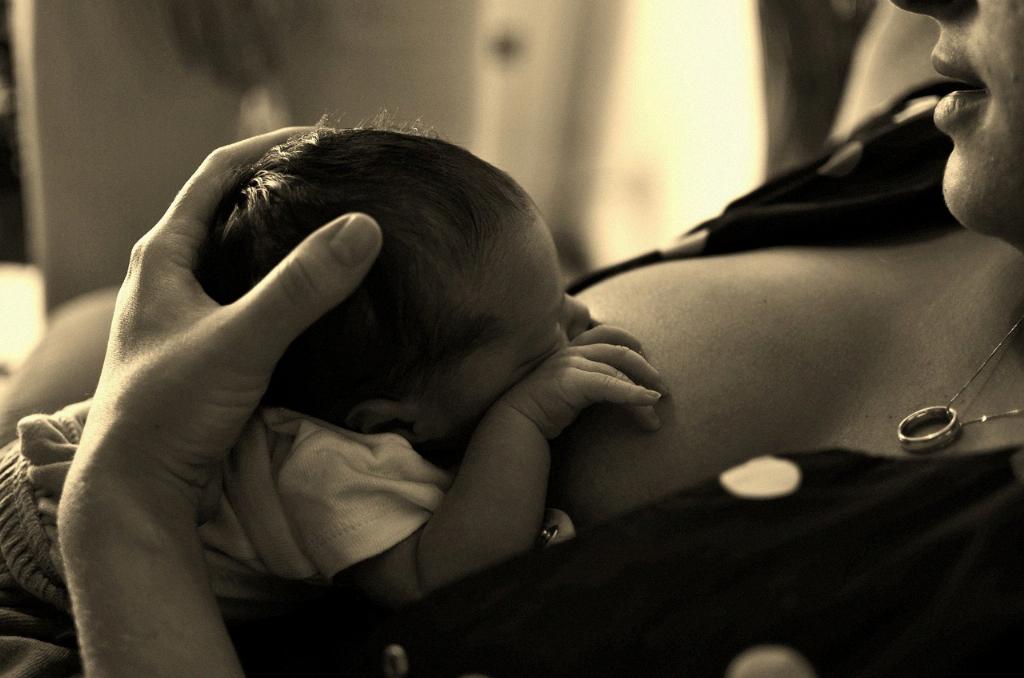It can be concerning for parents to notice red spots or rashes on their baby’s skin after breastfeeding. While there can be several reasons behind this reaction, one common factor to consider is food allergies. Research suggests that approximately 7.6% of children in the United States are affected by food allergies, making it a prevalent issue among infants.
Common Symptoms of Food Allergies
For breastfed infants, the manifestation of a food allergy can vary, but some of the most frequent symptoms include eczema, characterized by a scaly and red skin rash. Another common sign is the presence of bloody stool, especially when there are no other apparent signs of illness. These symptoms can be distressing for parents, prompting them to seek answers and solutions to alleviate their baby’s discomfort.
The Role of Breastfeeding in Allergic Reactions
While breastfeeding is widely acknowledged for its numerous benefits, it’s essential to recognize that babies can still develop allergies to specific foods consumed by the mother. Proteins from foods such as dairy, nuts, or eggs can be transmitted through breast milk, triggering an allergic response in susceptible infants. This can result in various skin issues, including red spots, hives, or eczema.
Identifying Allergens Through Elimination
When a baby experiences red spots after breastfeeding, one approach to pinpointing the allergen is through an elimination diet. This involves removing potential trigger foods from the mother’s diet and monitoring the baby’s reactions. By gradually reintroducing eliminated foods, it becomes easier to identify the specific allergen causing the skin rash or other symptoms.
Seeking Medical Advice for Confirmation
While observational methods like an elimination diet can provide insights, it’s crucial to consult a healthcare professional for a comprehensive evaluation. A pediatrician or allergist can conduct tests to confirm food allergies in infants, offering a more precise diagnosis and tailored recommendations for managing allergic reactions.
Exploring Treatment Options for Allergy-Related Symptoms
When a baby develops red spots or other skin issues due to food allergies, several treatment options can help alleviate discomfort and minimize symptoms. Gentle skincare practices, hypoallergenic products, and prescription medications may be recommended based on the severity of the allergic reaction and the infant’s individual needs.
Supporting Breastfeeding and Allergy Management
For mothers navigating the challenges of food allergies in breastfed infants, it’s crucial to find a balance between supporting breastfeeding goals and managing allergic reactions effectively. Seeking guidance from lactation consultants, pediatricians, or support groups can offer valuable insights and reassurance during this process.
Creating a Safe and Nourishing Environment
Establishing a safe and nourishing environment for a baby with food allergies is paramount for their health and well-being. By being vigilant about food choices, reading labels attentively, and communicating openly with healthcare providers, parents can help safeguard their child against potential allergens while ensuring adequate nutrition and growth.
Embracing a Holistic Approach to Allergy Care
Addressing food allergies in breastfed infants goes beyond symptom management; it encompasses holistic care that considers the emotional and physical aspects of both the baby and the mother. By fostering open communication, seeking support when needed, and prioritizing self-care, families can navigate the challenges of allergy management with resilience and understanding.
Empowering Parents Through Education
Through education and awareness, parents can become empowered advocates for their baby’s health, equipped with the knowledge and resources to address food allergies effectively. By staying informed about allergy triggers, treatment options, and preventive measures, caregivers can create a nurturing environment that promotes their child’s well-being and development.
Conclusion
In conclusion, red spots on a baby’s skin after breastfeeding can be a sign of food allergies, highlighting the need for proactive management and support. By identifying allergens, seeking medical guidance, and embracing a holistic approach to care, parents can navigate the complexities of allergy management with compassion and confidence, ensuring the best possible outcomes for their little ones.

